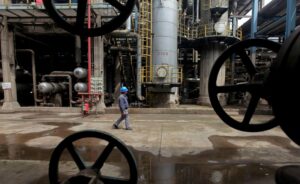Hyperinflation in Turkey slows as 50% interest rates start to cool economic crisis
Inflation fell from 71.6% to 61.78% in July, the second consecutive monthly fall.


Turkey’s annual inflation rate slowed sharply in July to 61.78 percent, official data showed on Monday, as the country battles a cost-of-living crisis.
It is the second consecutive fall after consumer price rises eased to 71.6 percent in June.
“Annual inflation is falling,” Finance Minister Mehmet Simsek said on the social media platform X.
“We continue to get positive results in all areas of our programme, whose main objective is disinflation,” he said.
“The decrease in inflation will be felt more in the coming period.”
The central bank began to raise interest rates last year in an effort to battle inflation, after President Recep Tayyip Erdogan dropped his opposition to orthodox monetary policy.
The bank kept borrowing costs unchanged at 50 percent for a fourth consecutive month in July.
Inflation traditionally eases during summer in Turkey, as energy consumption falls and tourism brings in foreign currencies.
“The large fall in headline inflation in Turkey in July will provide some comfort to the central bank that the disinflation process remains on track,” said Nicholas Farr, emerging Europe economist at London-based research group Capital Economics.
But, he added, “it will take time for policymakers to be fully convinced that they can begin easing monetary conditions”.
While the annual inflation rate eased in July, it rose by 3.23 percent compared to June. It had increased by 1.64 percent on a monthly basis in June.
Education, housing, health, and hotel and restaurants saw the biggest price increases.
Turkey’s annual inflation rate reached a decades-long high of 85 percent in October 2022 and then fell off before resuming a steady climb.
It rose to 75 percent in May this year before falling again.
The central bank expects inflation to reach 43.5 percent by the end of the year and slow further to 25.5 percent in 2025.
“We maintain our forecast for the first interest rate cut to arrive in 2025, a bit later than most others expect,” Farr said.







